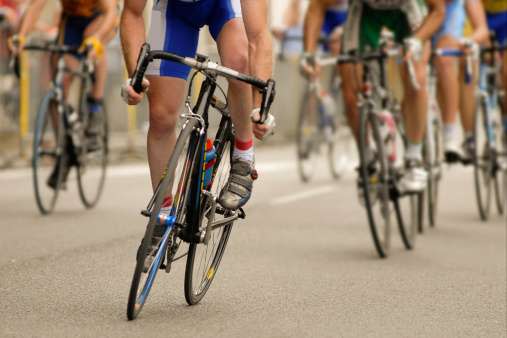7 things you should know about the Tour de France
Why do riders need teams?
Only one person can truly win the Tour de France, but this is a race all about teamwork. Even the strongest rider in the world would be nothing without a good team behind him. In fact, riders are so reliant on their teams that the winner will almost always split the sizeable prize money (over €450,000) between his teammates. After one of his trademark sprint finishes, you will always see Mark Cavendish thanking his team for the hard work they have put in to helping him bag the victory.

What different roles are there in a team?
Each of the 20 to 22 teams in the race consists of nine riders, each of whom have a specific job to do to benefit the team. Team leaders, or ‘captains’, are generally the strongest members, and the rest of the team will often be geared around helping them win. Everyone does this in different ways. For example, most teams will have; climbers, who are great at reaching the top of severe mountain climbs; sprinters, who specialise in sudden bursts of speed on flat sections; and domestiques, who carry water and spare equipment for their captains, whilst simultaneously protecting them from aggressive riding from other teams.
How does slipstreaming work?
So if captains are such talented riders, why do they need a whole team to help them win? Think of the Tour de France as a 40mph game of chess. Every move by a team is planned, practiced, and pulled off to achieve a specific purpose. For example, on mountain stages the team captain will usually ride in the slipstream of his teammates, where riding is estimated to be 30 per cent easier because of the reduction in air resistance. Teams will then rotate this role, which allows members to recover after a gruelling stint as the lead.
Why do the competitors ride in a pack?
You’ll have no doubt seen the large pack or ‘peloton’ that forms during stages, and might be wondering why the riders ride so closely together. This is all to do with slipstreaming and combating the effects of heavy wind. Depending on where the wind is coming from you’ll see the peloton change formation, manoeuvring to counter or take advantage of the wind. The close quarter action of the peloton means that riders will ‘follow the wheel’ of the rider in front of them, using their actions to navigate due to their blocked view. The peloton formation can also split and form echelons. The echelon looks as if the cyclists have fanned out, in a diagonal line across the road. As always, this tactic is to help the team gain an advantage in the race and the echelon protects riders from cross winds and thus helps the cyclists conserve energy,
What are the tactics behind sprint finishes?
The end of stage sprints are where tactics really come into play. Towards the business end of a stage riders will attempt to breakaway from the peloton with protection from their team. A lead out rider will head off first, with the team’s main sprinter behind him. All of a sudden, the lead out rider will move out of the way, and the sprinter will make a blisteringly fast dash for the finish. This is when you’ll start to see teams blocking each other, as each team tries to give their sprinter a clear run to the finish line.
What is the role of the sporting director?
All of the race tactics will be orchestrated by a sporting director, whose job it is to communicate with the riders throughout the race. The directors will carefully watch the race, and let their teams know exactly where everyone is, and whether or not a breakaway is worth chasing down. The most effective teams are those who can achieve perfect synergy with their race director, allowing them to react to developments in the race as quickly as possible.
What do Tour de France riders do during their rest days?
In some ways, the rest day for the Tour riders is misleading, as they usually use this time to go on a ‘gentle’ training ride to prevent their limbs and joints from stiffening, and to avoid their bodies thinking it’s time to relax. Rest days are also used for the recovery of wounds from any bumps and bangs the riders may have endured, expelling any build-up of lactic acid, and of course, lots of eating. Well, after burning thousands of calories each day, who would blame them?
Watch every stage of the Tour de France LIVE on British Eurosport, the Home of Cycling.
Available on Sky, Virgin Media and Eurosportplayer.co.uk Read more on realbuzz.com...
Tour de France: The basics
Why the Tour de France should inspire the cyclist in you
Follow realbuzz on Facebook


